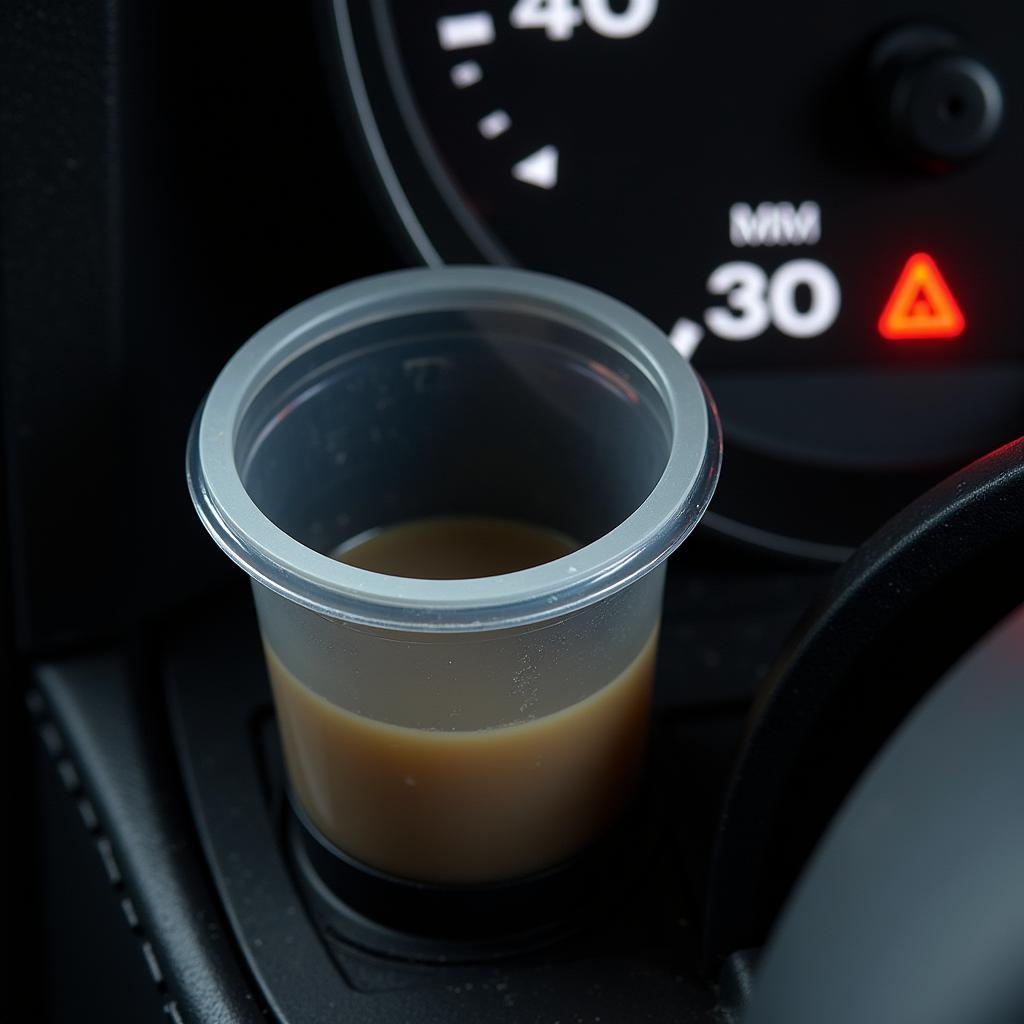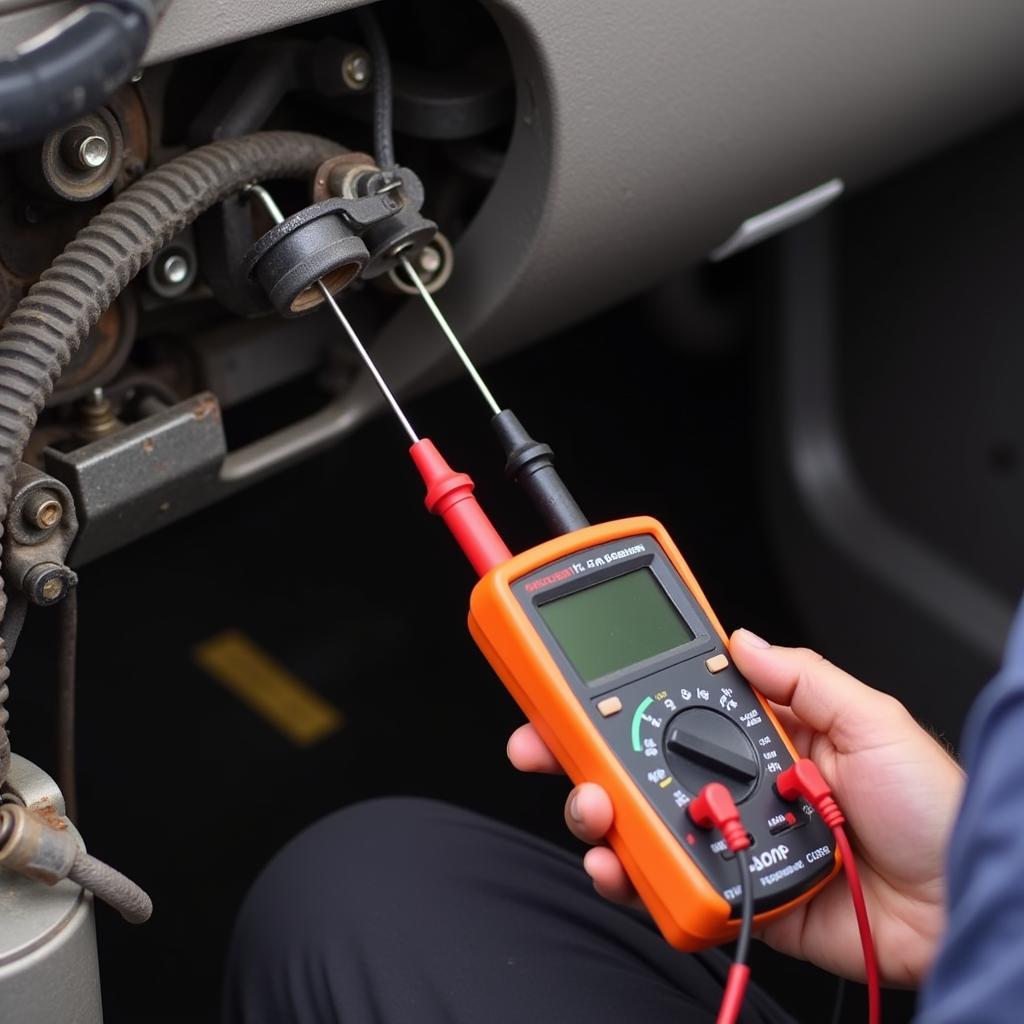Seeing both a wrench light and a brake warning light illuminated on your dashboard can be a concerning experience. These lights are your car’s way of signaling that something requires attention, and ignoring them could lead to further damage or even safety hazards. This guide will delve into the common reasons behind these warning lights, providing insight into potential problems and how to address them.
Understanding the Warning Lights
Before jumping into the potential issues, it’s important to understand what each warning light signifies:
- Wrench Light: This light, often shaped like a wrench or a gear, typically represents a malfunction within your vehicle’s electronic throttle control system. This system manages your engine’s power output based on your accelerator pedal input.
- Brake Warning Light: The brake warning light, usually a circled exclamation point, can indicate several issues related to your braking system. These can range from low brake fluid to more serious problems like a malfunctioning ABS (Anti-lock Braking System).
Common Causes of Both Lights Illuminating
While each light can point to separate issues, their simultaneous appearance often suggests a connection or a cascading problem affecting both systems. Here are some potential scenarios:
-
Low Brake Fluid: A common culprit is low brake fluid. Brake fluid is essential for transferring the force you apply on the brake pedal to the brakes themselves. A leak in the system can lead to a drop in fluid level, triggering both the wrench light (due to the vehicle’s computer detecting a problem) and the brake warning light.
 Low Brake Fluid Reservoir
Low Brake Fluid Reservoir -
Faulty Wheel Speed Sensor: Your car’s wheel speed sensors play a crucial role in both traction control (managed by the electronic throttle control system) and the ABS. A malfunctioning sensor can disrupt signals to these systems, leading to both warning lights appearing.
-
Issues with the Throttle Position Sensor: The throttle position sensor informs the engine control unit about how much you are pressing the accelerator. A faulty sensor can disrupt the engine’s performance and trigger the wrench light. If the issue confuses the car’s computer about engine output, it could also trigger the brake warning light as a precautionary measure.
 Mechanic Inspecting a Faulty Throttle Position Sensor
Mechanic Inspecting a Faulty Throttle Position Sensor -
Electronic Control Unit (ECU) Problems: The ECU is your car’s brain, managing numerous systems, including engine control and braking. Software glitches or electrical issues within the ECU can lead to various malfunctions, potentially triggering both the wrench light and the brake warning light.
What to Do When Both Lights Turn On
If you encounter both the wrench light and the brake warning light illuminated on your dashboard, follow these steps:
- Safely Pull Over: Find a safe location to pull over as soon as possible. Avoid sudden braking; if the issue is severe, your braking distance might be affected.
- Check Your Brake Fluid: With the engine off, carefully open the hood and locate the brake fluid reservoir. Observe the fluid level. If it’s below the “minimum” mark, your brake fluid is low and needs to be addressed immediately.
- Avoid Driving: If the brake fluid level is extremely low or you suspect a leak, do not attempt to drive the vehicle. Driving with low or no brake fluid is extremely dangerous and can lead to complete brake failure. Call a tow truck and have your car transported to a trusted mechanic or dealership.
- Seek Professional Diagnosis: Even if you add brake fluid and the warning lights disappear, it’s crucial to have your vehicle inspected by a professional. The warning lights are indicators of an underlying issue that requires proper diagnosis and repair.
Remote Diagnostics and Software Solutions
Advancements in automotive technology have led to the development of remote diagnostics and software solutions for certain car problems. If the issue triggering the warning lights is related to software glitches or electronic malfunctions, a qualified technician may be able to diagnose and address the problem remotely. This can involve:
- Scanning for Error Codes: Similar to how mechanics use diagnostic tools, remote technicians can access your car’s computer system to read and interpret error codes related to the warning lights. This helps pinpoint the specific area of concern.
- Software Updates and Reprogramming: In some cases, software updates or reprogramming of certain modules may be necessary to resolve the issue. This can be done remotely, eliminating the need for a physical visit to a repair shop.
It’s important to note that remote diagnostics and software solutions are not always possible or suitable for every car problem. If the issue is mechanical in nature, such as a brake fluid leak or a faulty sensor, physical repair will be required.
Preventive Maintenance for a Safer Drive
Regular car maintenance plays a vital role in preventing warning lights and ensuring your vehicle’s overall safety and reliability. Here are some key maintenance practices:
- Routine Brake Inspections: Have your brakes inspected at least once a year or as recommended in your vehicle’s owner’s manual. This should include checking the brake pads, rotors, calipers, and brake fluid level.
- Fluid Level Checks: Regularly check all fluid levels in your car, including brake fluid, engine oil, coolant, and power steering fluid.
- Adhere to Service Schedules: Follow the recommended service schedule outlined in your owner’s manual. This will ensure that your vehicle receives timely maintenance, reducing the risk of unexpected issues and warning lights.
Conclusion
Encountering a wrench light and brake warning light simultaneously is a serious matter that should never be ignored. While low brake fluid is a common cause, various underlying issues may be responsible. Prioritizing your safety by pulling over immediately, checking your brake fluid, avoiding driving if the level is critically low, and seeking professional diagnosis are crucial steps to take. Remember, addressing the issue promptly and ensuring regular car maintenance is key to a safer and more enjoyable driving experience.
